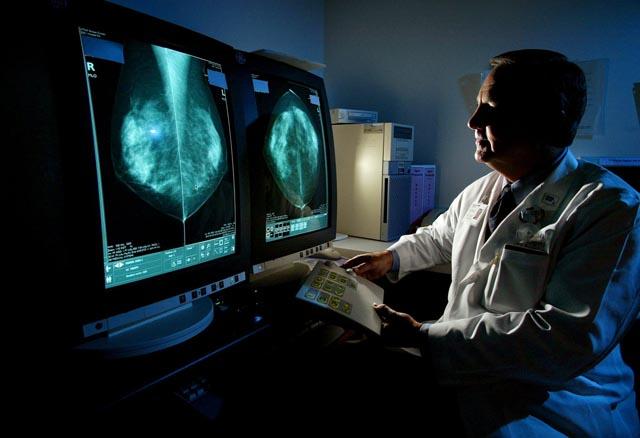You are here
Study urges adding ultrasound in breast cancer fight for some women
By Pittsburgh Post-Gazette (TNS) - Apr 18,2016 - Last updated at Apr 18,2016
PITTSBURGH — In the ever-changing, often complicated world of breast cancer detection, a large study led by a Pittsburgh researcher shows that ultrasound screening detected as many breast cancers as mammograms in women with dense breasts.
But don’t expect an ultrasound instead of a mammogram any time soon.
For now, the study recommends it as a complementary test for women with dense breast tissue — a situation facing about 40 per cent of women age 40 and older. While the two methods spotted about the same number of cancers, the study found that more cancers detected on mammography were milk duct carcinomas in situ or DCIS while more cancers seen on ultrasound were invasive breast cancers.
Mammography uses low-dose X-rays and ultrasound uses sound waves to examine breast tissue.
“Where mammography is available, ultrasound should be seen as a supplemental test for women with dense breasts who do not meet high-risk criteria for screening MRI (magnetic resonance imaging) and for high-risk women with dense breasts who are unable to tolerate MRI,” states the study published online this week in the Journal of the National Cancer Institute.
Wendie A. Berg, a physician in the Department of Radiology at Magee-Womens Hospital, led the American College of Radiology Imaging Network protocol 6666 breast cancer screening study, which involved 2,662 women in the United States, Canada and Argentina. Participants underwent three annual breast screenings through ultrasound and digital mammography then had a biopsy or 12-month follow-up examination.
A mammogram often cannot distinguish between white fibrous breast tissue and white tumour cells, unless calcifications are present. Berg says it has been described as trying to see a polar bear in the snow. In ultrasound screenings, however, such tumours show up grey, making them easier to spot.
Berg’s website, DenseBreast-info.org, says dense breasts have more fibrous and glandular rather than fatty tissue. In women with extremely dense breasts, cancer is up to six times more likely than in those with fatty breasts.
While mammograms find cancers undetected by other screening tests, they can miss more than 50 per cent of early cancers present in dense breasts, suggesting the need for additional screening through ultrasound or MRI.
The study, however, did find that ultrasound screening produced more false positives. Berg said they can be reduced by comparing results with previous mammograms and prior ultrasound examinations, and biopsies resulting from ultrasound are done with a needle rather than surgery. “The combination of mammograms and ultrasound cut down on false alarms,” she said.
Ultrasound screenings sometimes can replace mammograms for women who are pregnant or who have disabilities. But the discomfort of mammograms that some women experience alone isn’t sufficient reason for physicians to order an ultrasound, she said. Ultrasound as a diagnostic tool may require out-of-pocket expenses from the deductible or copay for most health insurance plans.
“It’s a case-by-case situation, but we are not encouraging ultrasound alone for the broad population of women,” Berg said.
Screening through tomosynthesis, or 3D mammography, was not included in the study. Berg said she’s just starting a large clinical trial, with participants still being accepted, that uses ultrasound screening after 3D mammography.
Women deemed to be at high risk for breast cancer typically are advised to undergo MRI, which is considerably more expensive but able to spot far more cancers than any other screening method.
For patients in developing countries who do not have access to mammography, ultrasound could be a viable option. Breast cancers are increasing worldwide with more than 1.6 million new cases in 2010 and 425,000 deaths. The number of new cases each year is expected to grow to 2.1 million by 2030.
The study says ultrasound screening can be done with a portable device costing about $15,000, or about a tenth the cost of mammography technology.
Related Articles
A Canadian study that many experts say has major flaws has revived debate about the value of mammograms. The research suggests that these screening X-rays do not lower the risk of dying of breast cancer while finding many tumours that do not need treatment.
In the latest major study to consider whether the dangers of mammograms outweigh the benefits, experts say the tests can reduce the chances of dying from breast cancer by nearly 30 per cent and that national screening programmes should continue.
A review of 50 years of studies on the risks and benefits of yearly mammograms has tied them to a 19 per cent drop overall in breast cancer deaths, but whether a woman benefits depends on factors such as age and family history, US researchers said on Tuesday.












